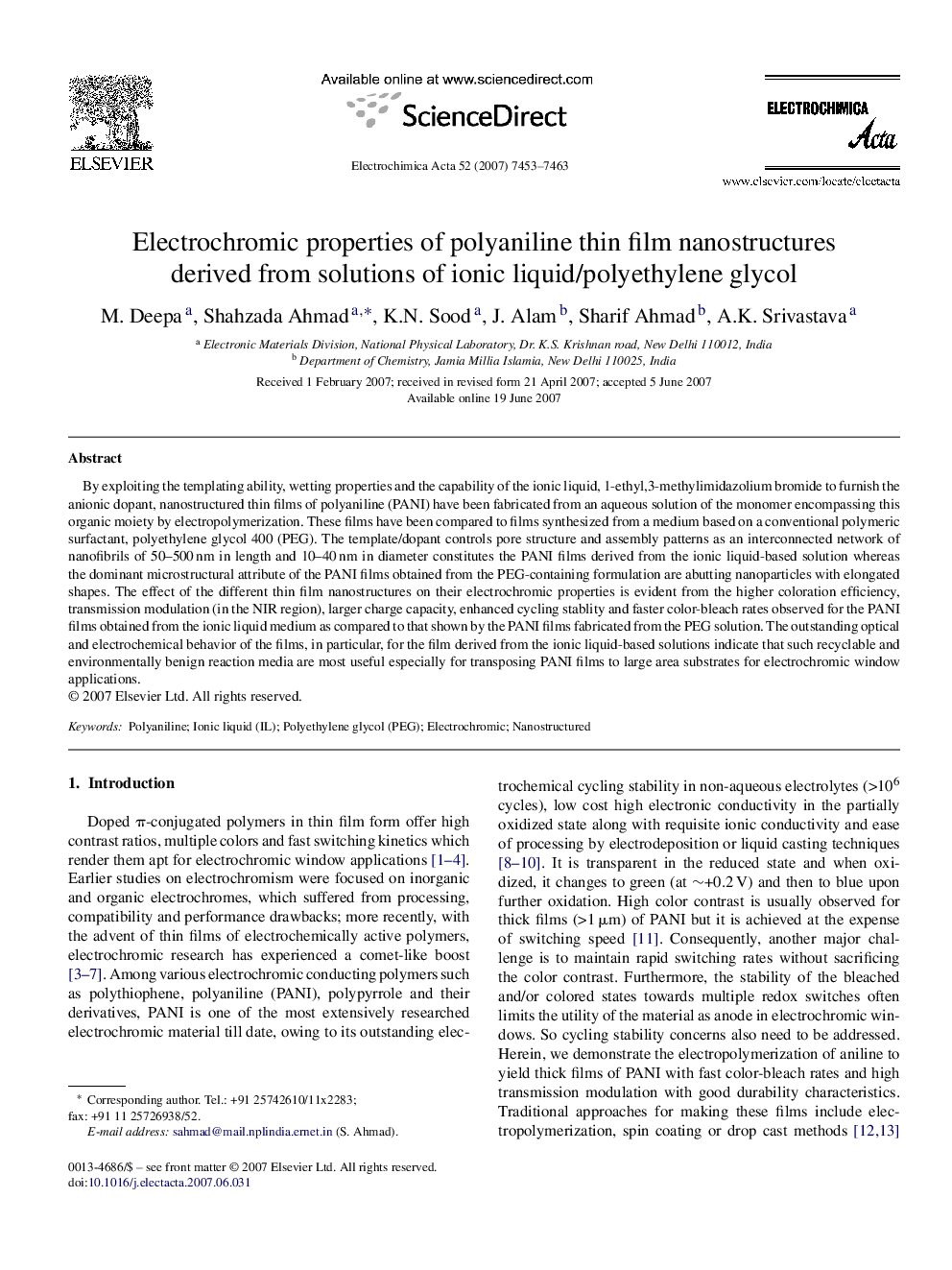| Article ID | Journal | Published Year | Pages | File Type |
|---|---|---|---|---|
| 195829 | Electrochimica Acta | 2007 | 11 Pages |
By exploiting the templating ability, wetting properties and the capability of the ionic liquid, 1-ethyl,3-methylimidazolium bromide to furnish the anionic dopant, nanostructured thin films of polyaniline (PANI) have been fabricated from an aqueous solution of the monomer encompassing this organic moiety by electropolymerization. These films have been compared to films synthesized from a medium based on a conventional polymeric surfactant, polyethylene glycol 400 (PEG). The template/dopant controls pore structure and assembly patterns as an interconnected network of nanofibrils of 50–500 nm in length and 10–40 nm in diameter constitutes the PANI films derived from the ionic liquid-based solution whereas the dominant microstructural attribute of the PANI films obtained from the PEG-containing formulation are abutting nanoparticles with elongated shapes. The effect of the different thin film nanostructures on their electrochromic properties is evident from the higher coloration efficiency, transmission modulation (in the NIR region), larger charge capacity, enhanced cycling stablity and faster color-bleach rates observed for the PANI films obtained from the ionic liquid medium as compared to that shown by the PANI films fabricated from the PEG solution. The outstanding optical and electrochemical behavior of the films, in particular, for the film derived from the ionic liquid-based solutions indicate that such recyclable and environmentally benign reaction media are most useful especially for transposing PANI films to large area substrates for electrochromic window applications.
